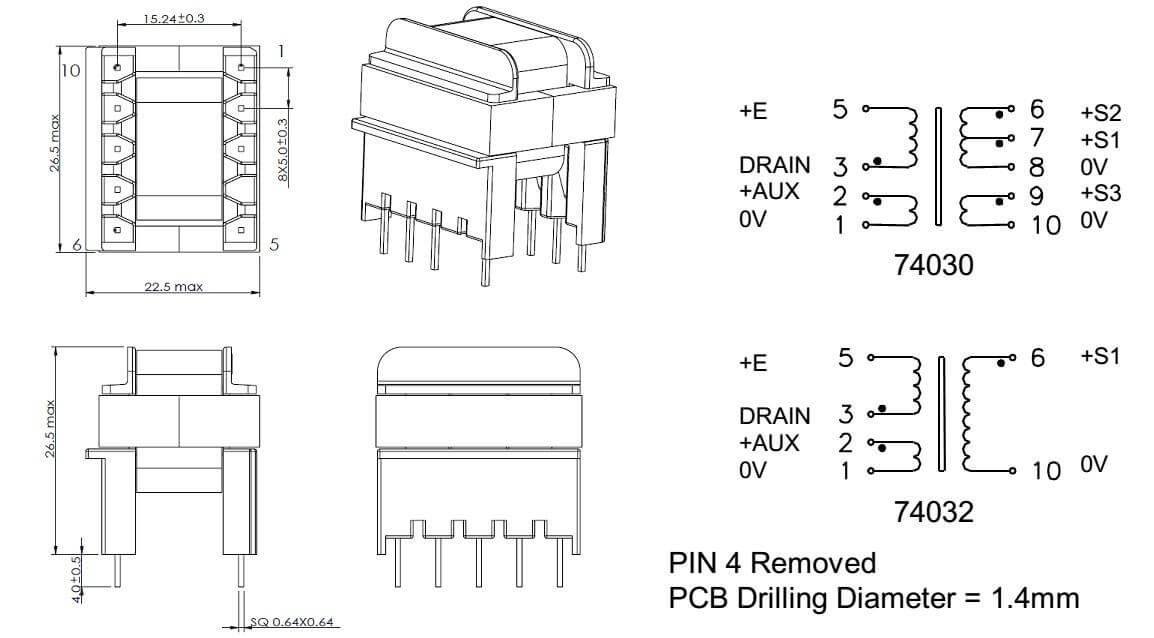Looking at your magnetic design requirements and not sure where to start?
These 21 Design tips will help to get you started.
- Talk to an experienced Magnetics design engineer early in your product design cycle to discuss the efficiency/cost trade-off’s available for your particular situation.
- Decide ahead of time what electrical standards your product and/ or its magnetics have to meet i.e. AS/NZ, UL, IEC, CCC, or any industry specific standard or requirement you may be subject to such as “intrinsically safe” design for mining applications.
- Decide what other technical characteristics you need from the transformer in your circuit i.e. Inductance, Winding Capacitance, Efficiency, DC resistance, EMI level, etc.
- Define any environmental or physical conditions the transformer/ product must meet i.e. temperature ranges, humidity levels, vibration resistance, etc.
- Choose a standard bobbin & core set that can handle your power requirements while meeting your temperature rise target.
- Balance the higher cost of SMD magnetic packages with the production efficiencies of pick & place equipment. “ThroughHole” components are generally cheaper than SMD but are more labour intensive to put on the PCB.
- Generally it is good to use a multi-section bobbin for high voltage transformers. This helps with meeting creepage and clearance distances required.
- If your temperature rise level is not an issue in your product design, then “push” the transformer by choosing a smaller bobbin/core set to lower your cost.
- But smaller is not necessarily cheaper as winding wire is more expensive the thinner it gets and small transformers generally require thinner wire and are harder to assemble.
- For high frequency transformers, the ferrite material grade required is largely determined by the switching frequency chosen.
- Grain Oriented (GO) steel is at least 200% more expensive than standard H14 electrical steel but only gives you up to 30% more power. Generally going bigger to get more power is cheaper unless you have an upper physical size limitation.
- If EMI is not an issue, consider going to higher frequencies to cut down on the size of the transformer.
- If EMI is an issue, balance the cost of the EMI mitigating choke required with the frequency and size of the transformer.
- Shielding is expensive and the smaller the transformer, the higher the cost impact of adding it.
- Ferrite cores are subject to cracking when potted in epoxies, causing gaps which may or may not suit your circuit. Typically the inductance values of the core drop significantly.
- Mu metal cores are 4-5 times more expensive than H14 electrical steel and do not justify their price with anywhere near proportional performance. Should be used only to achieve very specific outcomes not available using other materials or methods.
- If efficiency is critical, consider the “skin effect” when selecting your wire size. Use twisted wire or Litz wire to increase efficiency.
- Use Litz wire sparingly and only if justified by giving you a particular outcome not attainable by using some other alternative, as it is extremely expensive. Try twisted wire before going to Litz.
- When significant insulation between windings is called for, consider using triple insulated wire instead of standard enamelled wire.
- If coupling is critical, consider the “split winding” option.
- Always test your magnetics designs in your circuit to insure all critical parameters are met. Never assume as that can be very costly.
